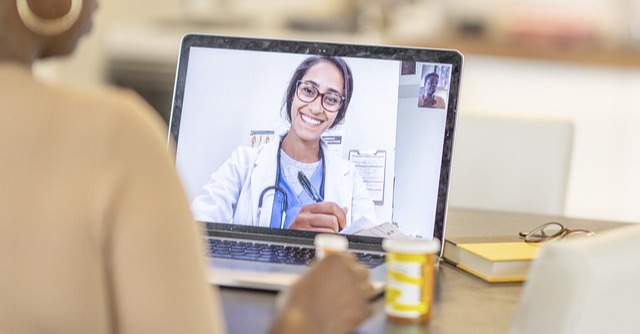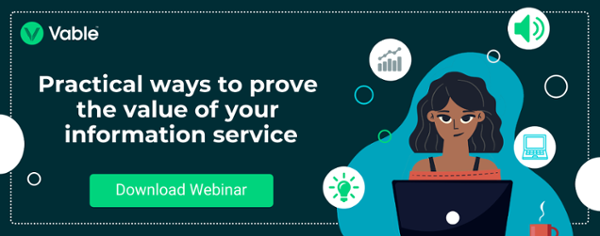Share this
Librarians and the future of medicine
April 18, 2018

It's not just law that has undergone an information revolution. Technology and medicine have intertwined since the Civil War era with the use of the “telegraph to transmit casualty lists and order medical supplies”. Today tech is pervasive in almost all aspects of medicine; from people using mobile devices to track their physical condition to health records being shared across services. Yet, it is still not fully integrated into our social institutions.
What is telemedicine?
As umbrella terms, telemedicine and telehealth are the most used. ‘Telehealth’ covers all services related to an individual’s health, while ‘telemedicine’ is defined as doctors using technology to expand or enhance clinical services. A growing number of other service terms are coming into play, for instance, teleradiology, telepharmacy, teleburn and telestroke.
Librarians have been providing access to electronic information for a long time so they have a strong foothold in the race to the future. In this way, it is pertinent for librarians to understand where technology and medicine intersect in order to provide timely and accurate resources.
Librarians can help the public by:
- Providing access to information
- Providing secure networks to converse with health practitioners
- Participating in health literacy programs
Librarians can help the practitioner by:
- Providing access to quality information
- Training practitioners on how to use Evidence-Based Medicine resources
- Providing secure networks to converse with patients
How do you make health information accessible, yet secure?
As libraries begin sharing space with other institutions, such as health or community centers, they may have to take on the task of providing secure, stand-alone terminals. Patrons should be able to access their health records, video conference with their practitioner, and/or access medical literature.
This requires large computing capacity on secure networks. In an ideal world this would have been figured out - for ‘anytime, anywhere access’ to health services by the 22nd century. For now it is a complicated and multidisciplinary conundrum. Each app, medical device, or communication software needs to be secure.
They also need to be work across various apps, medical devices and communication software. Some of the barriers and limitations to the future of telehealth include: limited insurance coverage, quality of patient-practitioner relationships, credentialing and licensing issues, and the digital divide.4
These pose serious problems for the industry and in the current climate, may take until the 22nd century to resolve. There are concerns about security and privacy when collecting and storing health data, especially across borders. The standard security protocol for patient information is anonymization or de-identifying.
This means that any identifying information such as social security number or address is removed or masked when traveling between systems or devices. It must be noted that health data is large and complex so some of these techniques don’t work well because they were developed for smaller data sets. As a result important information can be lost.
What is the future of tech and medicine?
Technology and medicine impact on everyday life for consumers and practitioners. From the health data on your phone, to electronic health records, consumers should have seamless access to this information. Consumers should be able to communicate with healthcare providers by phone, video, or instant messaging.
Practitioners require tools that will enable them to efficiently and effortlessly analyze patients data, access EBM, and communicate with the patients. Why should we leave it in the hands of Google, or Apple, or Amazon? Librarians can help by providing access to secure, evidence-based tools and resources, while at the same time forming collaborations with various health stakeholders.
Share this
- November 2025 (2)
- October 2025 (3)
- September 2025 (2)
- August 2025 (2)
- July 2025 (4)
- June 2025 (3)
- May 2025 (2)
- April 2025 (1)
- March 2025 (1)
- October 2024 (1)
- July 2024 (1)
- June 2024 (2)
- May 2024 (2)
- April 2024 (3)
- March 2024 (3)
- February 2024 (4)
- January 2024 (2)
- December 2023 (1)
- November 2023 (2)
- October 2023 (2)
- September 2023 (1)
- August 2023 (3)
- July 2023 (5)
- June 2023 (2)
- May 2023 (2)
- April 2023 (4)
- March 2023 (1)
- February 2023 (1)
- January 2023 (2)
- November 2022 (2)
- September 2022 (2)
- August 2022 (2)
- July 2022 (1)
- June 2022 (1)
- May 2022 (2)
- April 2022 (3)
- March 2022 (1)
- February 2022 (2)
- December 2021 (2)
- November 2021 (2)
- October 2021 (2)
- September 2021 (2)
- August 2021 (2)
- July 2021 (2)
- June 2021 (2)
- May 2021 (1)
- April 2021 (2)
- March 2021 (1)
- February 2021 (3)
- January 2021 (2)
- November 2020 (3)
- October 2020 (1)
- August 2020 (2)
- July 2020 (4)
- June 2020 (1)
- May 2020 (1)
- April 2020 (2)
- March 2020 (2)
- February 2020 (3)
- January 2020 (1)
- December 2019 (2)
- November 2019 (1)
- October 2019 (1)
- September 2019 (1)
- August 2019 (3)
- July 2019 (3)
- June 2019 (3)
- May 2019 (2)
- April 2019 (1)
- March 2019 (2)
- February 2019 (3)
- January 2019 (3)
- December 2018 (1)
- November 2018 (2)
- October 2018 (2)
- September 2018 (1)
- August 2018 (2)
- July 2018 (1)
- June 2018 (2)
- May 2018 (3)
- April 2018 (3)
- March 2018 (1)
- February 2018 (3)
- January 2018 (1)
- November 2017 (1)
- October 2017 (1)
- July 2017 (1)
- April 2017 (2)
- March 2017 (3)
- February 2017 (1)
- January 2017 (1)
- November 2016 (2)
- October 2016 (1)
- September 2016 (1)
- August 2016 (2)
- June 2016 (1)
- May 2016 (1)
- April 2016 (1)

